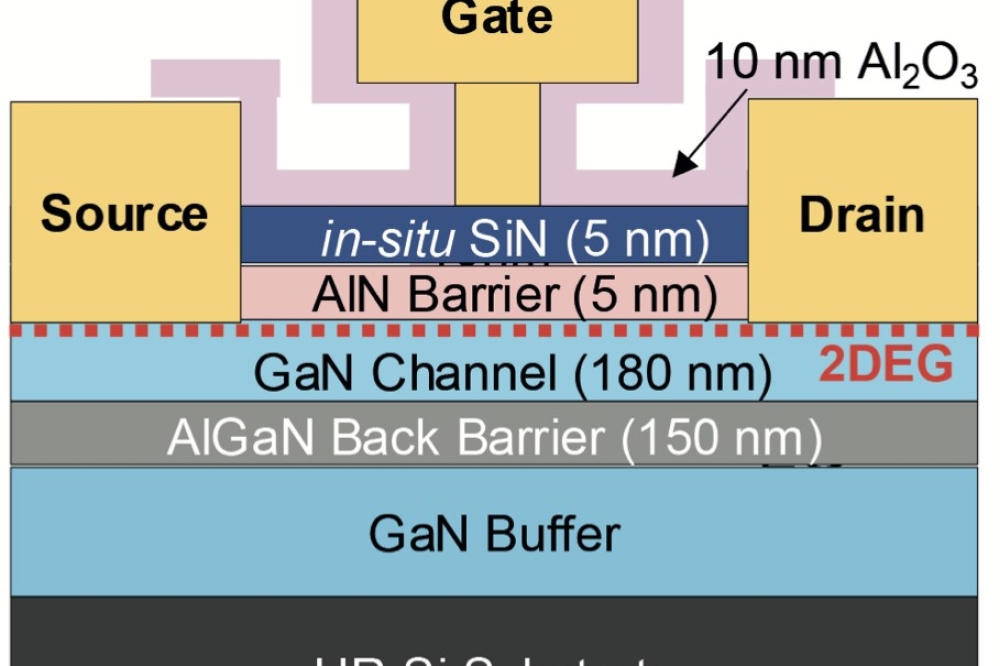Using graphene to tune THz lasers

Subhasish Chakraborty and colleagues at the University of Manchester have combined an atomically thin graphene sheet with terahertz quantum cascade lasers (QCL) to make a terahertz laser that can be tuned via the carrier doping level of the graphene layer.
According to the researchers, who published the research in Science, this is the first time live control over the output spectrum of QCLs has been demonstrated. They say the demonstration opens up the possibility of reversible control over the laser emission through the integration of graphene waveguides.
The output of a QCL (a stack of quantum wells grown in this case out of GaAlAs/GaAs by MBE) has a spectrum of wavelengths that can be controlled by depositing a gold film patterned with slots at regular intervals to encourage some output frequencies and discourage others.
The slots create surface plasmons, which modify local electric fields and the modes within the cavity, rather like small antennas on top of the laser cavity.
The Manchester researchers have been working an aperiodic holographic form of grating, developed using a computer algorithm to generate slot spacings that will most effectively deliver a desired output spectrum.
The Manchester team built two similar lasers, one with a gold grating and one a mono-layer of graphene covering the gold slots but separated from the gold by a polymer insulator.
While gold has fixed conductivity and fixed surface plasmon properties, graphene's Fermi energy and carrier concentration can be changed by electrical biasing to adjust conductivity and surface plasmon properties.
The gold holographic grating encourages an output spectrum extending from 2.88 to 3.0THz with four peaks at 30GHz intervals. These emerge along with a sea of largely suppressed sidebands.
Compared with the reference laser, biasing the graphene at the same voltage as the gold on the modified laser makes the sidebands far worse - in effect, partially turning the slots off. Set with the graphene biased 1V positive with respect to the gold, the sidebands are suppressed far more than with plain slotted gold, and so they are working as super-slots.
The researchers believe the full potential of the technique will be realised when technologists find ways to deposit individual graphene control gates over individual slots. With algorithms that can turn spectral requirements into slot patterns, plus the ability to turn slots on and off at will, single THz lasers can be designed for more than one application, or to generate more than one spectrum in a single application.
Demonstration of the integrated graphene plasmon laser principle lays the foundation for a new generation of active, programmable plasmonic metamaterials with major implications across photonics, material sciences, and nanotechnology.
Terahertz photonic devices remain a strong sector worldwide and the field is now moving into applications areas in medicine, security and terabit/sec data communication and the research work from Dr Chakraborty's group is ideally placed to take advantage of this trend.
'Gain modulation by graphene plasmons in aperiodic lattice lasers' by S. Chakraborty et al; Science 15 Jan 2016: Vol. 351, Issue 6270


































